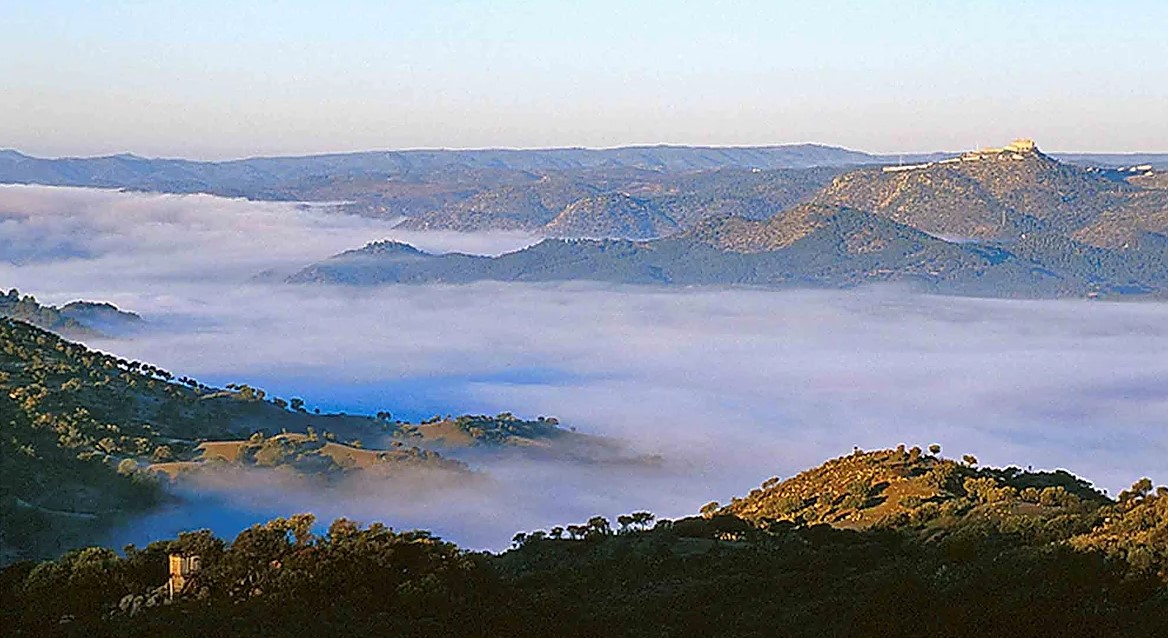Parque Natural Sierra de Andújar
Singular places
, Andújar
, Baños de la Encina
, Marmolejo
, Villanueva de la Reina
The Sierra de Andújar Natural Park is located in the northwest of the province of Jaén, in the heart of the Sierra Morena, just a step away from the city of Andújar. It has an area of 74,774 Has, and contains four municipal terms: Andújar, Baños de la Encina, Villanueva de la Reina and Marmolejo.
The Natural Park Sierra de Andújar offers rich contrasts in hill morphology and height. This countryside is home to the largest stretches of natural vegetation in Sierra Morena. The predominant trees are holm oaks (Quercus ilex), portuguese oaks (Quercus faginea) and cork oaks (Quercus suber).
Atlantic oak woodland is found in Sierra Quintana. Also, different animal species, such as Iberian lynxes (Lynx pardinus) or golden eagles (Aquila chrysaetos) inhabit the Sierra de Andújar, one their last few refuges in the Iberian Peninsula.
Cattle raising has considerable importance for the local economy, with extensive estates of Mediterranean pasture land devoted to fighting bull breeding or game hunting (deer, fallow deer, mouflons and wild boars). Hunting is indeed a most important economic resource in the area and many well-known hunting reserves, both public and private, are located in the Park.
During your visit you will very likely be able to witness the stunning spectacle of eagles flying above you. Three species of eagles live in the Natural Park of Sierra de Andújar: Golden eagles (Aquila chrysaetos), Bonelli's eagles (Aquila fasciata) and Spanish Imperial eagles (Aquila adalberti), the latter only found in the Iberian Peninsula. It is also possible to watch three carrion-eating birds: the Griffon Vulture (Gyps fulvus), the Cinereus Vulture (Aegypius monachus) and the Egyptian Vulture (Neophron percnopterus).
The main tourist attractions are the Sanctuary-Basilica of the Virgen de la Cabeza, where the oldest Spanish pilgrimage or 'romería' takes place in May every year, the water-dams of the rivers Jándula and Encinarejo, the environmental complex 'Cercado del Ciprés' (Cypress enclosure), which houses a botanical garden and a Nature Classroom, and the 'Mirador del Peregrino' (Pilgrim's viewpoint).
EXTENSION: 73,976 hectares.?
POPULATION: 40,974 inhabitants.?
DECLARATION DATE: July 28, 1989.?
MAXIMUM HEIGHT: Between 400 and 1,290 m. from Sierra Quintana (Pico Burcio del Pino).?
ECOSYSTEM: Forest (pine groves, oak groves, holm oaks, gall oaks and cork oaks) and Mediterranean scrub (rockrose, mastic, juniper).
FAUNA: Wolf, lynx, mongoose, otter, imperial eagle, golden eagle, black vulture, eagle owl, wild boar, fallow deer, mouflon, fighting bull.




